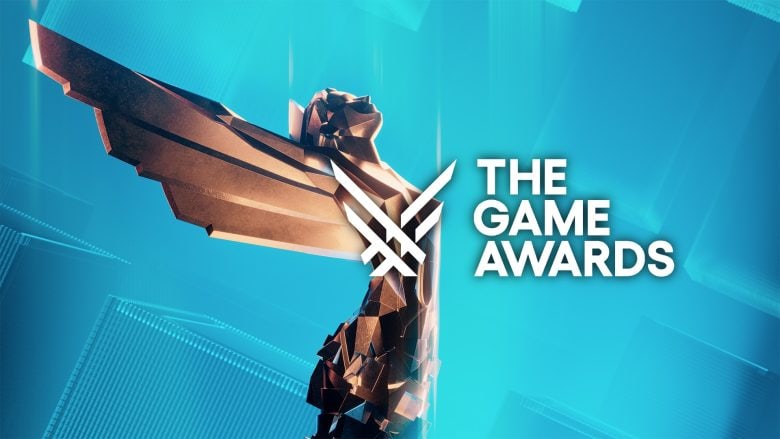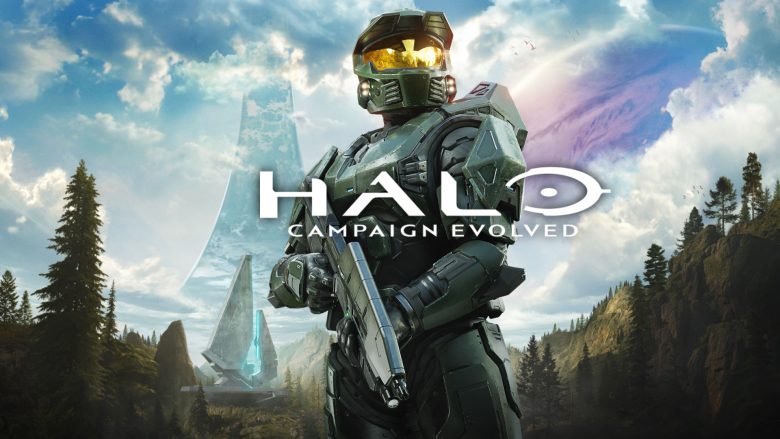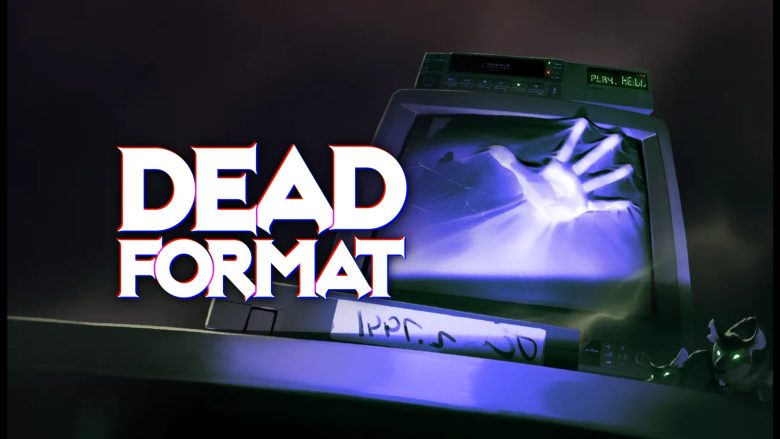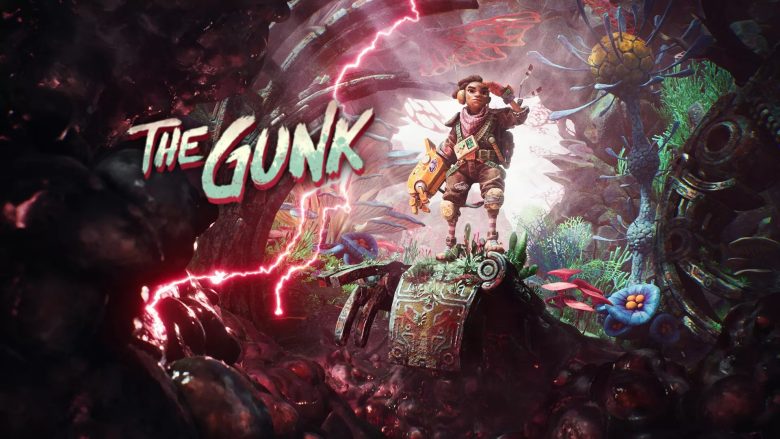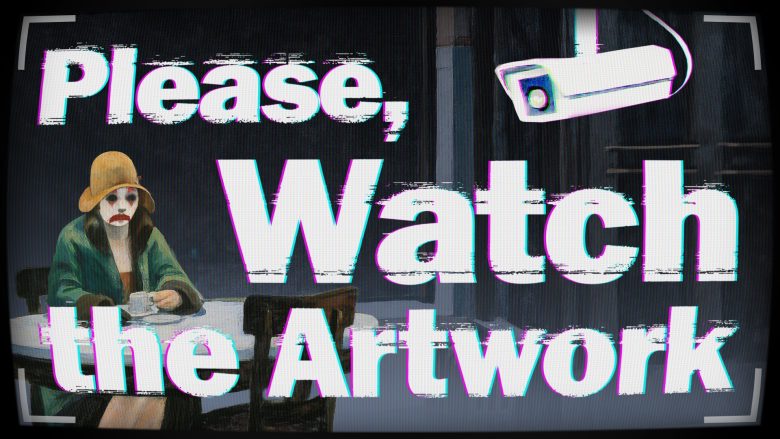A substantial and intriguing interview conducted with Nacho Rodriguez, the author of The Many Pieces Of Mr. Coo, a fascinating and surreal slapstick comedy.
Let’s go back to talking about The Many Pieces Of Mr. Coo, with a very detailed interview with Nacho Rodriguez, author and lead artist of this extraordinary work of art. If you missed our previous article on this title, we recommend catching up.
Without further ado, we present you the interview. Happy reading!
Francesco:
Hello everyone, welcome back to Indie Games Devel. I’m Francesco and I’m here with Chiara. We are very pleased to introduce you to Nacho Rodriguez, developer, artist, animator and the creative mind behind The Many Pieces of Mr. Coo.
Nacho Rodriguez:
Hello. Thanks for having me here.

Chiara:
I want to ask you traditional questions right way what is the hardest part in Solo developing?
Nacho Rodriguez:
The most challenging aspect for me was not working solo. When I worked independently, I had complete control over the process without any major issues, except for the internal struggle for quality. But I felt the need for a team and partners, and I got into a mess. I was new to this industry, and unfortunately, I didn’t choose the right partners. Previously I was also coding it myself using an old Flash version for both game animation and coding. When we decided to take it to the consoles, the problems began.
The process of porting my code to consoles was very messy. You are aware of the controversy. There were issues with managing people and production. Bad management, not the fault of the actual coders, led to wrong decisions and planning.
It’s true that taking frame-by-frame animation to consoles wasn’t easy. Flash could do it well, but it was vector-based and timeline-based. I could do agile things in animation that couldn’t be easily reproduced in Unity. There’s no simple mechanism to take it to consoles. So, adding this difficulty to bad management was the problem.
Francesco:
Would you like to tell us more about yourself and your background? Who exactly is Nacho Rodriguez? And if you’re open to sharing, did you always have the aspiration of becoming a video game developer, or did this path unfold more spontaneously?
Nacho Rodriguez:
I was born in Asturias in the north of Spain, and I always liked to draw. I was drawn to comic books, and what interested me most about drawing was capturing movement. I hadn’t settled for animation yet, when I moved to Barcelona to study Fine Arts. It was an animation teacher, during a very introductory subject on animation when I was around 20 years old, who noticed my work and told me, “You were born for animation,” which was enlightening. I had already been creating animations, but I was uncertain whether pursuing comic books or another medium. Sometimes, we need others to recognize the talent we’re already expressing.
I started animating at the age of 13 with an antique program called Autodesk Animator, which was versatile but required me to draw with the mouse, resulting in a slow process and large pixels. When I was 19 or 20, I discovered Flash and its possibilities for quick learning by trial and error. Despite having these very introductory animation lessons in Fine Arts, I am a self-taught animator. Flash made animation easy and available. Traditional animation, done on paper, felt too slow for me, lacking the immediate testing possibilities that software like Flash provided. My intention was not to take advantage of Flash shortcuts but to create traditional frame-by-frame animation. If technology made it easier, I embraced it, but avoiding economic shortcuts and rigid puppetry. I wanted every frame to be alive, capturing the spirit of cartoony animation from Warner Bros, 30s animation and other influences worldwide.


While I was fascinated with video games as a child, I wasn’t a heavy gamer. I played classic graphic adventures like Monkey Island and Day of the Tentacle in the 90s. As I grew older, being an animator, I thought, “Why not create a graphic adventure with full animation?” Animation is already interesting for its lifelike qualities, and combining it with the interactivity of a game enhances the immersion for players and viewers. This has been more or less my trajectory and interest in gaming.
Chiara:
Artist, animator, designer, creator, video game developer, or perhaps a fusion of these professions? What, in your view, are the words that most accurately describe you, your profession, and, naturally, your art?
Nacho Rodriguez:
I would say director and animator. I’ve also been a freelancer for a long time, working for other people. However, I soon realized that I don’t like advertising much at all. I mean, advertising is bad for your health, although it seems well-paid; they crunch you, and it isn’t worth it. For the most part, I don’t even want to showcase the work I’ve done, even if it’s technically good, as it’s not the work nor the message I want to be recognized for.
Little by little, I pushed for more interesting projects, like short films and music videos, and always worked on my own stuff in my free time. This Mr. Coo video game will be the first time my character will earn me some money. But all the other Mr. Coo stuff from previous years opened many doors, providing great exposure and opportunities.
Mr. Coo first appeared in 2004. I was making it for the love of art and little else. There was also “El Laberinto Esférico,” a little video game made in Flash in 2008, made for a contest. I was a freelancer making things for other people, but gradually, the tiny voice of Mr. Coo urged me to focus on my own work. This became more pronounced when I quitted freelancing and focused completely on the game Many Pieces of Mr. Coo, which I had been developing on my own. I felt that with a producer, I could leave everything else and concentrate on this, even if it was more of a placebo feeling. It wasn’t thanks to them that I could leave all my other work.
Yes, they put some money up front, but it wasn’t worth it for the actual five years of development that ensued. In the end, I realized I could have already left freelancing and just focused on Mr. Coo. The point is that Mr. Coo demanded my whole attention and involvement. That’s why I consider myself a director because I’m called to do my own stuff, hopefully with the help of others. Little by little, I learned what my sense of aesthetics and quality was, and developed my own criteria, which wasn’t clear at the beginning. I have my own universe and way of doing things. I always preferred doing it myself, although I’m willing to find a team and delegate part of the animation work from now on because it’s beginning to feel cumbersome for me, to keep drawing thousands of frames alone.
Chiara:
How does the design of Mr. Coo come to life?


Nacho Rodriguez:
From my childhood, as I mentioned before, the most interesting animations for me were the cartoony ones. The actual inspiration for Mr. Coo comes from the Pink Panther, where this white guy was sometimes the enemy of the Pink Panther. I really liked the design. You weren’t so wrong with the influences you suggested in your previous article because, actually, this ‘big nose design’ was very popular in the ’50s, maybe even sooner in the ’40s possibly, with the UPA cartoons. Many characters afterward, including the ones from Bruno Bozzetto, share this style, and the one that impacted me was the one in Pink Panther. It’s a matter of simplicity, having the minimum details possible.
In a way, it’s an economic reason because, as an animator, the first lesson you learn is that you have to draw a lot. So it’s a good idea to have a simple character. I like this simplicity to be able to express a lot of adventures and not to be burdened with tiny buttons on a shirt or a lot of hairs. The simplicity and minimalism were what I wanted most. Little by little, as you can see in my game, the newer characters I developed are not so simple and suddenly have much more detail. But it was nice to have a basic one to learn and see the possibilities. When you take away all the details, you get a simple character facing the world, and that’s kind of the universal appeal of animation that isn’t stuck in a time or a place, so it can relate to everyone and at any time.
Francesco:
Plenty of irony, style, surrealism, and even a brilliant touch of the grotesque. All of these elements and more can be discovered in the narrative of The Many Pieces of Mr. Coo. However, if we were to focus into the narrative design, is there an event, a situation, or something real (even autobiographical) that inspired you in crafting Coo’s story and his “many pieces”? / Is there any event or real situation that may have inspired you in crafting the narrative of Many Pieces of Mr. Coo, or is it entirely fictional?
Nacho Rodriguez:
They do have a very important and deep meaning for me, but I like to present them in this metaphorical, surreal way. For example, at the beginning of this game; I started developing it with Mr. Coo riding the little chicken because that was the last image of the previous game, “El Laberinto Esférico,” which ended with Mr. Coo riding this chicken. So, years afterward, I decided to take this image and let it flow. Since Mr. Coo had been in a kind of limbo from 2008 to 2012 when I started The Many Pieces of Mr. Coo, he had been in a state of paradise where nothing was happening but he was very happy riding the chicken. That felt like he was in a limbo, a paradise where nothing is happening. To break from there, you need to eat an apple, like in the Bible. This, for me, has a symbolism; it’s like saying, “We want trouble, we want adventures; we don’t want the peacefulness of nothing happening.” So, yes, we have the desire for an apple, for adventures.
Very soon for the game, I had the idea of having Mr. Coo broken into pieces, and the three pieces of Mr. Coo would have to collaborate. This draws inspiration from the game “Lost Vikings,” where three Vikings have to collaborate between them—a very interesting game. Of course, Mr. Coo doesn’t want to be broken, but if he doesn’t get broken, we have no adventure. That was the germ of the story. He actually gets what he wants, which is just the apple, but then this malefic character, the crocodile, comes and cuts him into pieces.

I kind of like the crocodile for that same reason, because he puts things in motion, and the other character, the enemy of the crocodile, is the old man who actually wants everything to stay in place. Of course, these are parts that I can find in myself. A willingness to get into trouble and experiment, but my maybe fearful part wants to have everything rigid and under control. I find all these parts inside of me, and maybe Mr. Coo is the archetype of innocence, just being here in the world without knowing what to do and innocently getting into trouble.
Even though I started animating here and creating this part for the video game, I realized that we hadn’t explained to the player why Mr. Coo wanted the apple. So, I started constructing the story before that. I found here an interesting philosophical and symbolic theme. What happens before you are born? You are floating in the darkness, and it’s very suggestive and inspiring for me. One of the first images of the game is Mr. Coo trying to cross a curtain, a red one. I’ve been into different types of meditation and this kind of stuff for a few years now. I connect in that sense with the David Lynch approach, because he’s also a meditator, and he likes very dark stuff and things coming out of the dark. It’s true; when one meditates, you are alone with the void, and it’s somewhat scary. But you finally learn that the void is very fertile. At the same time, there seems to be this curtain impossible to trespass, but things emerge out of it. This kind of inspiration is very personal, somewhat mystical, and I like to give it an exterior appearance of slapstick cartoons and silliness. Only if people are interested do I speak about these deeper meanings. I don’t want to preach or be very explicit with these subjects; so I find rich inspiration in these mysterious paths.
Francesco:
Another aspect where strong surrealism is evident, in addition to the storyline, is the artistic component, the art design, and the environmental design. They appear to maintain a strong connection and undeniable references to this artistic current. If there is a clear reference, is it the sole artistic current at play, or do you believe there are others from which players should take notice and identify?
Nacho Rodriguez:
Of course, everything that I like and has influenced me is, one way or another, expressed in the video game, even without my conscious intention. Surrealism, for me, is just the natural language of cartoons because transformations and fantastical elements are what cartoons can do naturally.
I much prefer when things morph into one another, and impossible things happen. It’s a pity when cartoons try to be too realistic or overly naturalistic. I only incorporate real-world elements, such as gravity, to create a contrast with the impossible and magical things. In terms of style, there are influences from other interesting animators like Masaki Yuasa, a great Japanese creator, especially the way of narrating. I’ve been influenced by his short film “Cat Soup,” also known as “Nekojiru-So,” which is very surreal and fantastical.
Another influence is the Czech animator Jan Švankmajer, a classic stop-motion animator. His use of old objects has influenced many later parts of the game, with all the antiques and vintage objects. Additionally, the early comic “Crazy Cat” had a significant impact, particularly in the chapter where Mr. Coo is running with a chicken, as well as in the character designs.
Also, one of my earliest inspirations was Bruno Bozzetto. As a very small child, I watched the movie “Allegro Non Troppo,” and I was totally amazed by it. It’s an important influence for me.
When it comes to inspirations, I try not to copy them directly but to actually digest them and make them my own. There are thousands of things that I find aesthetically pleasing, and I try to learn why they are beautiful, so as to create my own version of them.
Francesco:
The animation style of The Many Pieces of Mr. Coo is truly unique and has reminded us of a highly influential, nostalgic, and successful animation style that was very popular from the 1970s to the 1990s. What was the players’ general first impression of this aspect of the game? Did it strike a chord more with long-time players, or did it also capture the attention of younger audiences who may not be as familiar with this traditional art and animation style?


Nacho Rodriguez:
I think everyone is somehow familiar with traditional cartoony animation. I’ve been a professional animator for over 20 years now. I learned that everyone loves animation, especially when it’s making its own wacky stuff. It’s universally appealing.
When I go to animation festivals and see presentations of projects, I think it’s a pity that the market demands nonsensical constraints, like a specific “target audience”. If it’s good animation, it’s for everyone. Of course, if it’s too dark, it might not be suitable for kids, but good animation will appeal to both kids and old people alike.
That’s what I wanted to bring to video games—animation without words. And while the message is deep to me, the game doesn’t have the agenda of expressing a moral. The animation is its own narrative, told entirely through images. This approach bypasses the barrier of verbal understanding, allowing players to be hypnotized by the drawings in motion. Animation has the power to captivate and immerse you in the story.
When I started showing it to people, I was pleased to see how well it works. It appealed to people of all ages. Even those who claim not to be gamers or find it challenging to play get sucked into the game. I observed this with people aged 60 and above, and with very young kids. The universal appeal of animation transcends age, gender, and location. It’s the power of animation, which, of course, requires a lot of work, especially when it’s drawn frame by frame.
Francesco:
Why, in your opinion, is the point-and-click formula the most suitable and perfect solution for a video game like The Many Pieces of Mr. Coo?
Nacho Rodriguez:
The game design choice for a point-and-click game in The Many Pieces of Mr. Coo was influenced by several factors. One significant inspiration came from the games by Amanita Design, particularly a Flash game called “Samorost” from the early 2000s. “Samorost” was a surreal point-and-click game with no text, and I thought, “Wow, this can be done easily in Flash.”… Sort of easily.
I have enough knowledge of coding to create my own projects in Flash, including some experiments with action games. However, I realized that action games couldn’t fully express the narrative and the creative potential I envisioned. As an animator focused on storytelling, I found the point-and-click genre to be the perfect fit.

Chiara:
Do you want to tell us how it went with Gammera Nest, and most importantly, how is it going now?
Nacho Rodriguez:
Before the five years of collaboration, I had a significant part of the game developed in Flash. I partnered with Gammera Nest to help taking it out to stores and consoles. However, the process of porting from Flash to Unity -Gammera’s task- proved challenging. The project faced setbacks, including changes in the team, with programmers coming and going, leading to a mess and loss of time.
As I continued to work on the creative aspects of the game, managing the animation, assets, and instructions, Gammera’s team kept getting into trouble. My own part of the job was finished by 2020, but their coding progressed too slowly and unstable. I tolerated many delays, because my focus was just on delivering a quality game. The release date was decided between Gammera and the distributors, Meridian Games, while I was raising alarms about the slow pace of their production.
We did create a nice physical version along with Meridiem in the meantime. But the actual game was dragging.
They had always promised they would deliver a quality game. But as the release date approached, it became evident that the game was full of bugs and incomplete puzzles. The quality fell short of expectations, leading to stress and frustration. Finally the release proceeded without my approval. The first players experienced a very buggy version of the game. And I made a public statement on Twitter about the issues.
After the release, efforts were made to fix the game, but communication issues and a lack of collaboration with Gammera Nest persisted. Thankfully, players understood the situation and showed me great support. Meanwhile I sought legal assistance to address the contractual obligations.
After the buggy release, efforts were made to fix the issues, and while the current level of quality may not be totally satisfactory for me, significant improvements have been made. The latest communications with Gammera Nest are showing signs of collaboration to address the remaining critical issues, including fixing the hint system and completing the final boss puzzle. I’m still pushing for a version that I can be finally proud of. It’s not so far, but the job is still in their hands.
Chiara:
What are your plans for the future?
Nacho Rodriguez:
Despite the challenges and difficulties, I haven’t been able to take an actual break because the creative ideas keep flowing. Even though it has been a tough period, I find it hard to be idle. I’m constantly generating ideas and drawing every day. I have three lines of continuation for Mr. Coo games.
One is the continuation of the big story, the second part of the same game. The other two are little games that spontaneously emerged in my mind. I try to keep these projects manageable to avoid overwhelming myself. Currently, I’m focusing on one of these smaller games, handling the animation personally, and maybe the code too.
While I don’t know the final form, size, or partners involved, ideally, I hope to find the right collaborators and delegate some animation and coding work. Surprisingly, I find that I don’t want to leave the realm of video games. Despite the character possibly fitting other formats like movies or series, my inspiration keeps leading me towards video games. So, Mr. Coo is still very much alive in these ongoing projects.

Francesco:
Thank you so much for your time and availability. We appreciate your insightful answers, and it was a pleasure having you here with us.
Nacho Rodriguez:
My pleasure. See you again soon!
Francesco:
Thank you once again, and break a leg for all your current and future projects. We look forward to seeing more from you. Until next time, goodbye!
In Conclusion
Thanking Nacho for his availability, his time, and for answering our curiosities, we remind you that Many Pieces of Mr. Coo is available for purchase from September 7, 2023, on Nintendo Switch, PC, PlayStation 4, PlayStation 5, Xbox One, and Xbox Series X/S.
While awaiting the discovery of his future artistic works and immersing ourselves in his upcoming adventures in the gaming world, we suggest following him on his X page, where you can stay updated on all the future news regarding him and The Many Pieces of Mr. Coo.
That’s all for today. Until next time!


